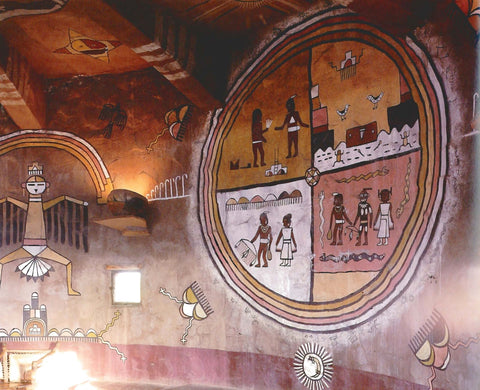The History and Traditions of Ear Candling

Hopi Ear Candles
The history of ear candling includes many oral traditions and cultural stories, though most are undocumented and cannot be verified. Some commercial sources may present unverified claims about its origins.
Some commercial sources have claimed a connection between ear candling and the Hopi Tribe. There is no verified documentation that supports this association, and official representatives of the Hopi Tribe have clarified that ear candling was not a traditional practice of their community.
The Hopi Tribe has not granted permission for the use of their name or cultural practices in connection with commercial ear candling products.
The Hopi Cultural Preservation Office has established guidelines to protect Hopi cultural and intellectual property. Any research, publication, or commercial activity relating to Hopi culture requires prior authorization.
The Hopi people desire to protect their rights to privacy and their intellectual property rights. Due to the continued misrepresentation and exploitation of the rights of the Hopi people, guidelines were established to protect the rights of present and future generations of Hopi people. The Hopi Tribe requires that any entity whether private or commercial wishing to engage in research, publication, or recording activities on the Hopi Reservation first obtain a permit from the Hopi Cultural Preservation Office, located in the Honahnie building in Kykotsmovi, AZ.
As of this date, there has been no permit granted to Biosun to use the Hopi name, especially for commercial profiteering.
The Hopi Tribe, which is a very poor and devastated tribe, has asked Biosun to stop using their name illegally but they have been ignored by Biosun. Since the Hopi Tribe is indigent, they have no recourse available to them except to respond to the claims that Biosun has made with the following statement:
The Hopi Cultural Preservation Office is not aware of Hopi people ever practicing “Ear Candling.” Biosun and Revital Ltd. are misrepresenting the name “Hopi” with their products. This therapy should not be called “Hopi Ear Candling.” The history of Ear Candling should not refer to as being used by the Hopi Tribe. Use of this false information with reference to Hopi should be stopped

Biosun has placed a mural from the Desert View Watchtower next to Martin Gashwesoma in many of his marketing pieces to represent the use of ear candling in the Hopi Tribe. Biosun states that the picture is a “coloured wall mural in the Hopi tower Grand Canyon.”
This picture is not part of the Grand Canyon but instead was created in 1932 by architect Mary Coulter and constructed by the Fred Harvey Company.
According to the National Park Service of the United States of America: The mural is one-quadrant of a 4 quadrant mural painted by Fred Kabotie in 1932 at the Desert View Watchtower. In her 1933 book entitled “Manual for Drivers and Guides of the Indian Watchtower at Desert View and its Relation, Architecturally to the Prehistoric Ruins of the Southwest,” the image displayed is one of the father giving prayer sticks to his son. The son is about to leave on a journey down the Colorado River in search of the snake people. The mural is part of the snake legend story of the Hopi people. The prayer sticks (feathers) are commonly depicted as part of Hopi customs.

For the complete story of the snake people, please visit: http://www.firstpeople.us/FP-HtmlLegends/The_Origin_Of_The_Hopi_Snake_Clan-Hopi.html
There are popular stories linking ear candling to Egyptian, Mayan, and Aztec cultures, though there is no verified historical evidence. These accounts are considered anecdotal and are not included in formal historical research on ear candling.
Traditional Ear Candling
Ear candling has been practiced for at least two to three generations according to oral histories. The exact origins and historical applications are uncertain. Ear candling is now primarily used as a relaxing and calming ritual.
Historical accounts describe Italians, Polish, and Spanish communities using various materials to create ear candles for relaxation and wellness rituals.
Different cultures have used a variety of materials for ear candles, including:
- Italy- Cheese Cloth
- India- Papyrus Reeds
- Mexico- Newspaper
- America (Native Americans)- Corn Husks
Read more on the History of Ear Candling

